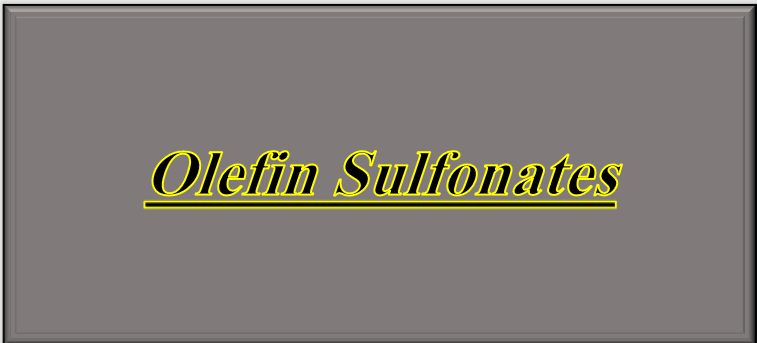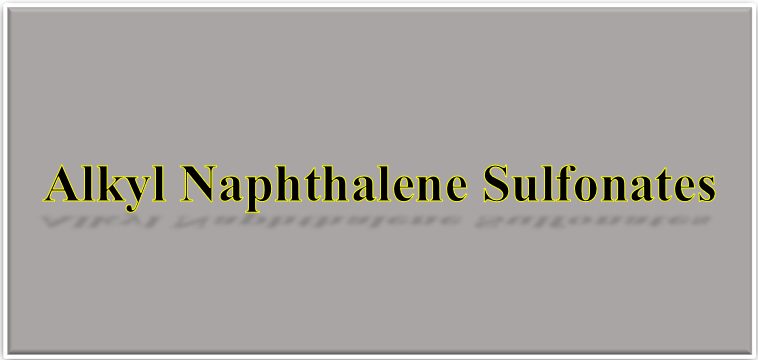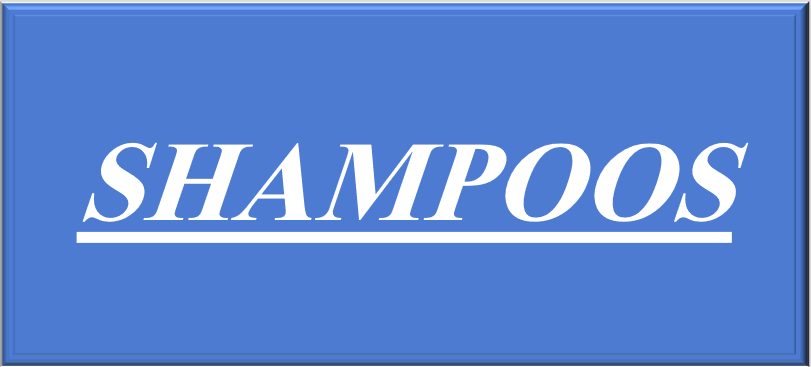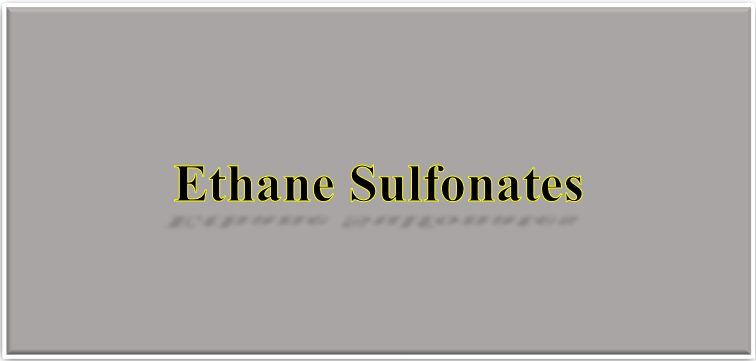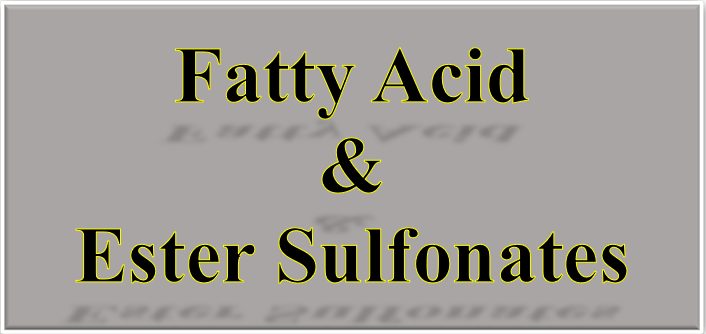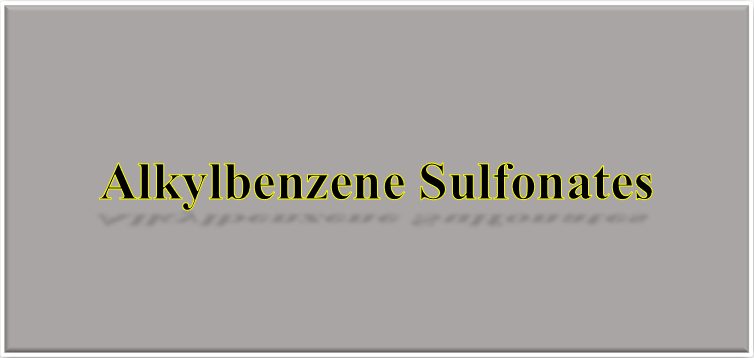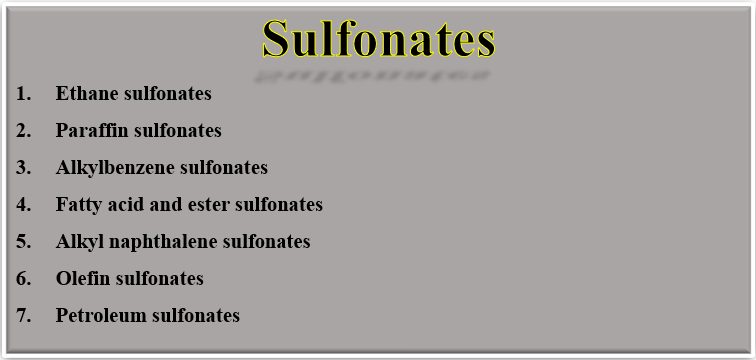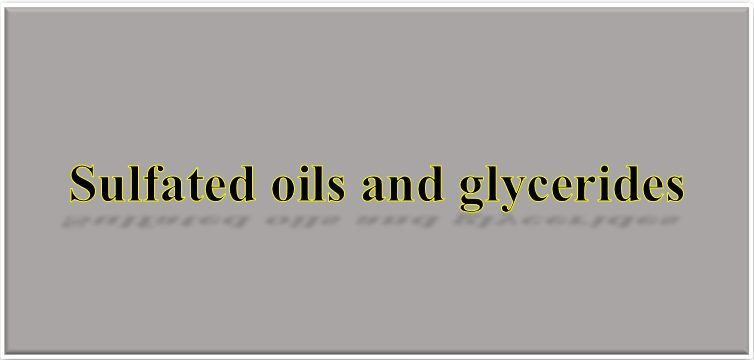Abbreviations
AS (alcohol sulfates), ALS (ammonium lauryl sulfate), FAS (fatty alcohol sulfate), LAS (sometimes used but it is more often used for linear alkylbenzene sulphonates or linear alkane sulphonates (paraffin sulphonates) and thus can lead to confusion).
Examples:
Sodium lauryl sulfate.
Description
Alcohol sulfates are now only available from primary linear alcohols which can be natural or synthetic. Alcohol sulfates are not stable as the free acids, so only the salts are commercially available. The most common form is the sodium salt. Amine salts based on mono-, di-or triethanolamine and ammonia are also offered by most manufacturers; these are usually 30-40% active. Solutions of 60-70% can be made and are sometimes offered by manufacturers. Alcohol sulfates are now made by sulphonation of the alcohol with sulfur trioxide.
Solubility
The common sodium salts of C12-C14 (dodecyl) alcohol sulfates give gels at active concentrations above 30%. Below 30% active, they will be liquid at normal temperatures but set to a soft paste when the temperature falls below 25°C (Kraft point).
Amine salts (MEA, DEA, or TEA) improve solubility, DEA less soluble than TEA but gives a lower viscosity solution. The amine salts darken on storage particularly on exposure to light. The Kraft point depends upon the distribution of carbon chains in the parent alcohol with a wide distribution giving a lower Kraft point (around 10°C) and resulting flowable solutions at room temperature. The solutions of fatty alcohol sulfates show cloud points below room temperature which can vary from one manufacturer to another. The main reason for the variation is the amount of electrolyte and free alcohol remaining in the product.
Chemical stability
Both primary and secondary alcohol sulfate salts are unstable to acid (as described under Sulphates).
The viscosity of aqueous solutions
The viscosity increases very rapidly around 30-40% to give a gel, but then falls at about 60-70% to give a pourable liquid, after which it increases again to a gel. The concentration at which the minimum occurs varies according to the alcohol sulfate used, and also the presence of impurities, e.g. unsulphated alcohol. The position of the minimum can also be affected by temperature.
Viscosity of aqueous solutions can be reduced by the addition of short-chain alcohols and glycols. Easily thickened with alkanolamides (and salt). The viscosity can be increased by addition of electrolyte.
Compatibility with aqueous ions
Stable to hard water at low alkyl chain lengths (C10) but sensitivity to hard water increases with increasing chain length. Magnesium salts have improved stability over the sodium salts in hard water and have higher alkali tolerance.
Functional properties
Foaming properties:
foam volume and stability increases in hard water compared to soft water; optimum foaming is with C12-C14 mixture (especially if some free alcohol left) in hard water for quantity and quality (forms small bubbles and a rich creamy foam); C8-Cl0 is a foam depressant; Cl0 increases the flash foam; C14 lower volume and less stable foam than C12-C14 mixture; C16-C18, less foam.
Wetting properties:
good wetting agents but sulphation along the chain (secondary alcohol) rather than at the of the chain will give a smaller branched molecule (USP 2422613 and USP 2423692) with better wetting but reduced detergency. Wetting also improves as the chain length of the hydrophobe is reduced. Excellent emulsifiers (particularly for sebum); excellent detergency.
Disadvantages
Poor hydrolytic stability.
Applications
Household detergents
Tallow alcohol sulfate can be substituted for LABS in heavy-duty detergents to give lower foaming products but with slightly superior detergency. Tallow is:
| Beef | Mutton | |
| Oleic acid (%) | 40-50 | 35-40 |
| Palmitic acid (%) | 25-35 | 25-35 |
| Stearic acid (%) | 19 | 30 |
Heavy-duty liquids in conjunction with non-ionics.
Cosmetics and shampoos
DEA lauryl sulfate is often used with lauroaminopropionates (amphoterics) to improve detergency in shampoos. Sodium lauryl sulfate was once the main surfactant for shampoos but had poor solubility (due to inorganic content from chlorosulfonic acid manufacture) and needed alkanolamides (cocomonoethanolamide at 10-15%) on the sulfate or glycols to give clear solutions. It was, however, excellent for creams and pastes. Modern manufacturing methods (SO3) give AS with low amounts of electrolyte and low alcohol, and thus a low cloud point. At the present time, ammonium lauryl sulfate is probably used in more shampoos than any other anionic surfactant. The ammonium salt is claimed to be less irritant than the sodium salt.
Textiles
Low-temperature detergent for delicate fabrics; dye retarder when amine groups are present on the fiber; dyestuff dispersant in aqueous media.
Specification
| Active material | usually 30-40% for aqueous solutions |
| Mean molecular weight | 290-310 for sodium salt of C12-C14 alcohol |
| Unsulphated matter | up to 5% but most products now < 1 |
| Sodium sulfate | up to 2% |
| Sodium chloride | should be below 0.1 % |
| Cloud point (Kraft point) | 10-25°C |
| Viscosity | can vary over a very wide range |



